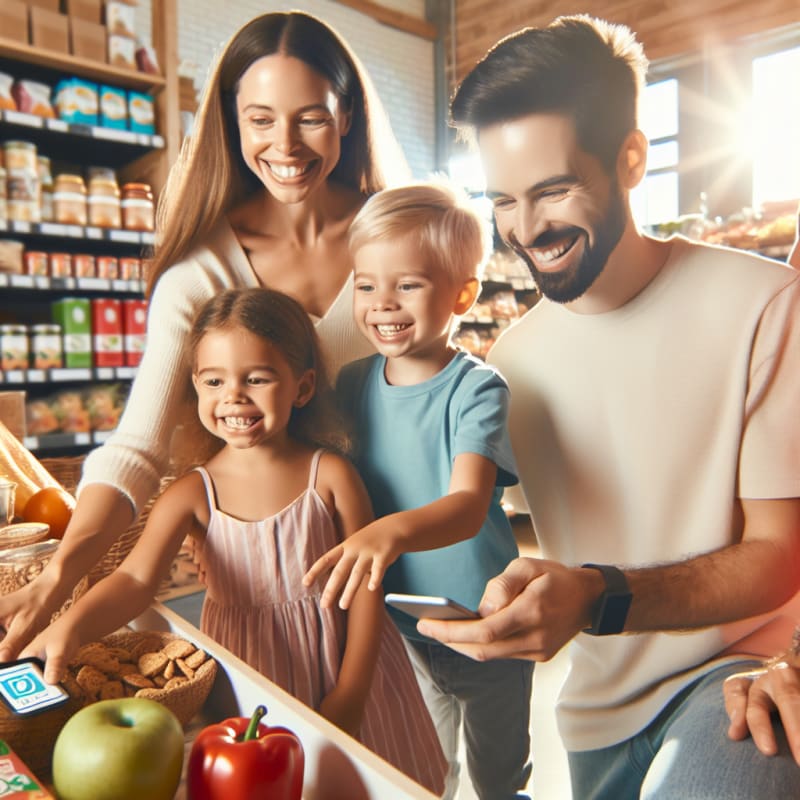Scan Your Food For Gluten – Here’S How
Confessional insights on how to install and use food scanners to detect gluten—plus what every ingredient-conscious eater needs to know.
Why I Needed to Scan My Food for Gluten
If you’re like me, the fear of hidden gluten in everyday foods is more than an inconvenience—it’s a health hazard. After a scary reaction at a restaurant, I realized that reading labels wasn’t enough. I needed a way to scan my food for gluten—and I wanted something fast, reliable, and easy to install on my phone. This blog is my confessional journey, packed with practical steps, science-backed advice, and the latest tech for anyone who’s ever asked, “How do I really know what’s in my food?”
Understanding Gluten: The Basics
Gluten is a protein found in wheat, barley, and rye. For millions—especially those with celiac disease or gluten sensitivities—accidentally consuming gluten can trigger severe symptoms. According to the National Institutes of Health, even trace amounts can cause issues.[1]
- Celiac disease: Autoimmune reaction to gluten
- Non-celiac gluten sensitivity: Digestive and neurological symptoms
- Wheat allergy: Immune response to wheat proteins
The challenge? Gluten can hide in sauces, snacks, and even health foods. Ingredient lists aren’t always clear, especially when you travel or buy imported products.
Labeling Laws: US vs. EU (Why It Matters)
| Region | Authority | Gluten-Free Standard | Mandatory Labeling? |
|---|---|---|---|
| United States | FDA | <20 ppm gluten | Yes (for gluten-free claims) |
| European Union | EFSA | <20 ppm gluten | Yes (Regulation (EU) No 828/2014) |
| Germany | BfR, EFSA | <20 ppm gluten | Yes |
| France | ANSES, EFSA | <20 ppm gluten | Yes |
Both the FDA and EFSA set the gluten-free threshold at less than 20 parts per million (ppm). But enforcement and ingredient transparency can vary. In the US, “gluten-free” claims are regulated, but cross-contamination risks remain. In the EU, stricter traceability is enforced, but imported foods may lack clear labeling.[2]
How to Scan Your Food for Gluten – Here’s How
The good news? Technology now lets you scan your food for gluten in seconds. Here’s how I did it, step by step:
- Install a Food Scanner App
- Download Food Scan Genius from your app store.
- Allow camera and barcode access.
- Scan the Barcode or Ingredient List
- Open the app and point your camera at the product barcode or ingredient panel.
- Food Scan Genius instantly analyzes the ingredients for gluten and other allergens.
- Review the Results
- The app flags gluten-containing ingredients and cross-contamination risks.
- Get alternative suggestions for gluten-free products.
- Save Your Preferences
- Set dietary filters (gluten-free, vegan, nut-free, etc.).
- Build a safe shopping list for future use.
Pro Tip: Some scanners use AI to detect hidden gluten sources, like maltodextrin or modified starches, that aren’t always labeled as “wheat.”
Food Scan Genius: My Personal Experience
“I used to spend ages in grocery aisles, squinting at labels. After installing Food Scan Genius, I just scan and go. It’s saved me from accidental gluten more than once—and I love the instant alerts for cross-contamination.”
— Jamie L., Chicago, IL
The Food Scan Genius app isn’t just for gluten. It covers dairy, nuts, soy, and more. The database is updated daily, including US and EU products. For travelers, it’s a lifesaver—especially when ingredient lists are in a foreign language.
- Fast scanning with barcode and photo recognition
- Global database for US, EU, and imported foods
- Personalized alerts for your sensitivities
- Easy installation—just download and start scanning
Try Food Scan Genius now and join thousands who eat safer every day.
Scientific Evidence: Why Scanning Matters
Studies show that up to 32% of “gluten-free” labeled foods contain detectable gluten, often due to cross-contamination.[3] According to PubMed research, scanning products before consumption drastically reduces accidental exposure. The EFSA recommends regular ingredient checks, especially for processed foods.[4]
- FDA study: 5% of US “gluten-free” products tested positive for gluten (2022)
- EFSA report: Cross-border foods pose higher risk in the EU
- Recent news: NY Times reports rising consumer demand for accurate gluten detection
- BBC News: UK study finds hidden gluten in restaurant meals
- Reuters: Gluten-free market expands as tech helps consumers scan ingredients
Q&A: Scan Your Food for Gluten – Here’s How
Q: What’s the easiest way to scan food for gluten?
A: Download a scanner app like Food Scan Genius, open it, and scan the barcode or ingredient list. The app will instantly tell you if gluten is present.
Q: Are scanner apps accurate?
A: Most apps use up-to-date databases and AI to flag gluten-containing ingredients. Accuracy depends on product data and labeling, but scientific studies show they significantly reduce accidental exposure.[3]
Q: How do US and EU labeling laws differ?
A: Both require “gluten-free” claims to meet the <20 ppm standard, but enforcement and ingredient transparency can vary. EU laws are stricter on traceability, while the US relies on FDA guidelines.
Q: Can I use Food Scan Genius outside the US?
A: Yes. The app covers US, EU, and many international products. It’s especially useful when traveling or buying imported foods.
Q: What should I do if the app detects gluten?
A: Avoid the product and look for recommended gluten-free alternatives. Always double-check for cross-contamination risks.
FAQ
- How do I install a food scanner app?
- Go to your app store, search for Food Scan Genius, and tap “Install.” Allow camera and barcode access for best results.
- Is scanning necessary if a product is labeled gluten-free?
- Yes, because cross-contamination and mislabeling can occur. Scanning adds an extra layer of safety.
- Can scanners detect hidden gluten sources?
- Advanced apps use AI to flag ingredients like maltodextrin, modified starches, and hydrolyzed proteins that may contain gluten.
- Are scanner apps free?
- Most offer free versions with optional premium features for advanced scanning and global databases.
Conclusion: Scan, Install, and Eat Safer
If you care about what’s in your food—whether for health, allergy, or dietary reasons—scanning for gluten is essential. Labeling laws help, but technology like Food Scan Genius closes the gap, making it easy to install and use wherever you go. My confession? I’ll never shop or eat out without scanning again. Understanding ingredients—and using smart apps—means fewer worries, safer meals, and more freedom. Try it, and see how much easier life can be.





